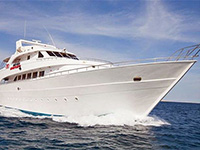Reviews: "Love the newsletters! Keep them coming" Janice Fleming...MORE REVIEWS

Giant Moray Eel
The largest of the moray eels, growing up to 3 m and weighing up to 30 kg! Common throughout the Indo-Pacific, including the Red Sea.

Are Giant Morays Dangerous?
Although large, they are not normally dangerous to divers. But they are powerful fish with sharp teeth that can inflict serious wounds if provoked.
John E Randall, writing in Australian Natural History Volume 16 Issue 06 recounts.
"The man was spearing a large moray eel for the Marine Toxins Program of the Hawaii Institute of Marine Biology. He followed a policy of spearing an eel and then returning to the boat for about 15 minutes. During this waiting period, the eel was expected to die or be sufficiently weakened to be easily pulled free of its hole and safely transported to the boat. One good-sized eel was apparently little affected, for it extricated itself from the spear and bit the man in the shoulder.
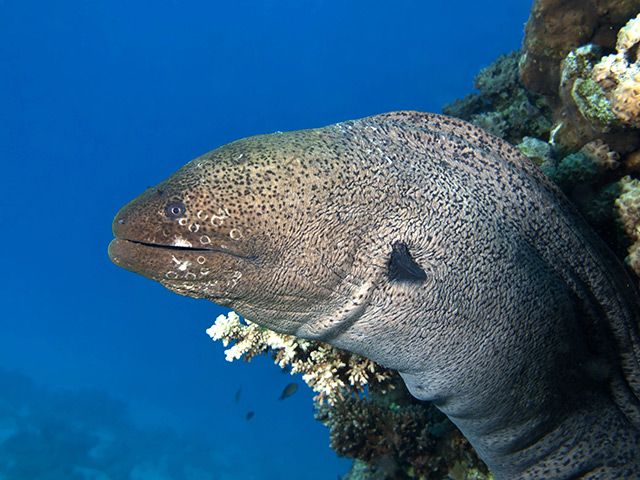
Can you eat them?
No! They cause ciguatera fish poisoning. Ciguatoxin occurs in dinoflagellites, small organisms which stick to coral and algae. These are consumed by herbivorous fish. The fish in turn are eaten by larger fish and the toxin becomes more and more concentrated up the food chain until it reaches the giant moray eel. Once thought to be confined to the South Pacific and Caribbean, the toxin was recently isolated in the Red Sea and the Atlantic Ocean.

Symptoms of ciguatera toxicity include nausea, vomiting, diarrhoea, headaches, muscle aches, numbness, vertigo, metallic taste in the mouth, blurred vision and hallucinations. Severe ciguatera toxicity can cause a feeling of a burning sensation on coming in contact with a cold object. Signs and symptoms can last from weeks to year and a relapse may be triggered by consuming alcohol, nuts, seeds, fish, chicken or eggs.
Co-operation between Giant Morays and other fish
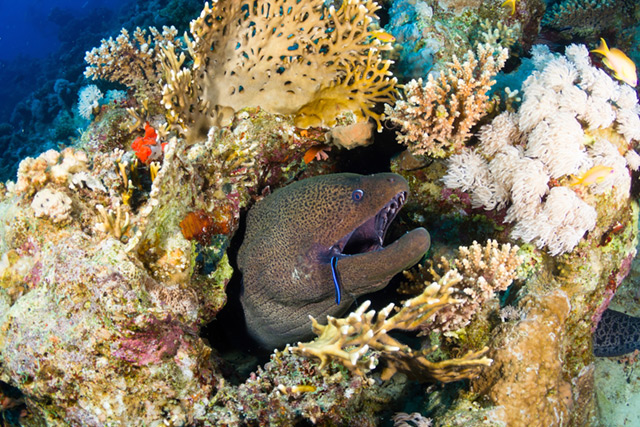
The eel is being cleaned by a Bluestripe Cleaner wrasse (Labroides dimidiatus). It is eating parasites and dead tissue off the eel's skin. This keeps the eel's skin healthy whilst providing a meal for the wrasse. It's helpful cleaning duties give it protection from being eaten by the larger fish. An example of mutualism.

Giant morays also co-operate with grouper in a hunt. The grouper signals to the moray eel to start a joint search for prey, and recruits the eel to a prey hiding places. This works for both fish as they have complementary hunting skills
Normally grouper hunt during the day and giant morays during the night. Grouper hunt in midwater, so prey fish hide in crevices in the coral. Morays, though, squeeze through holes in the reef to corner their prey. Consequently fish swim into open water to avoid them. When the grouper and the moray work together though, they are very difficult to evade.
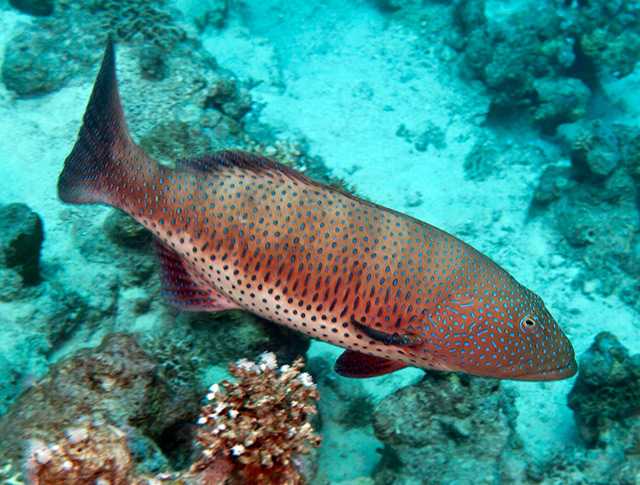
A hungry grouper will seek out a giant moray and hover in front of it, shaking its head. The moray joins it and the hunt begins.
This behaviour lets the grouper catch five times as many fish as on its own. The moray caught even more fish than the grouper. The individual fish that caught the prey swallowed it quickly and whole without any aggression from the unsuccessful partner.
Lifestyle of Giant Morays
Morays undergo a sex change during growth, changing from male to female.
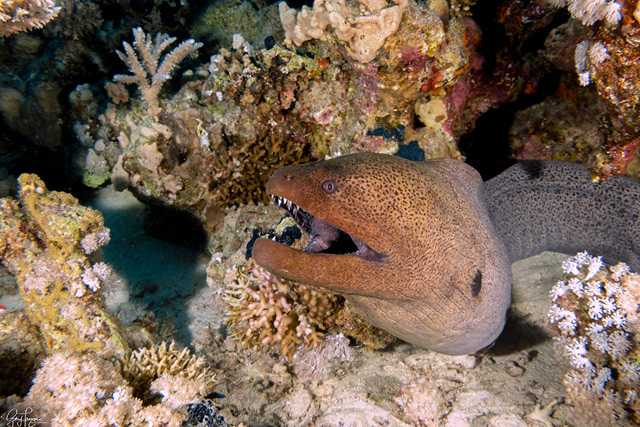
They feed primarily on fish, occasionally on crustaceans and octopus. You may see giant morays rhythmically opening and closing their mouths. They do this to maintain a respiratory current past the gills.

Giant moray eels are fascinating creatures with a complex social life and surprising hunting strategies. While their large size might seem intimidating, they generally pose no threat to scuba divers as long as proper respect is maintained. These underwater residents play an important role in the reef ecosystem, and understanding their behaviour helps us appreciate the delicate balance of life within the coral world.
References
Traylor J, Singhal M. Ciguatera Toxicity. [Updated 2023 Jun 26]. In: StatPearls [Internet]. Treasure Island (FL): StatPearls Publishing; 2024 Jan.
Randall, J.E. 1969. How Dangerous is the Moray Eel? Australian Natural History. June 1969: 177-182.
Bshary R, et al. Interspecific communicative and coordinated hunting between groupers and giant moray eels in the Red Sea. PLoS Biol. 2006 Dec;4(12):e431.
